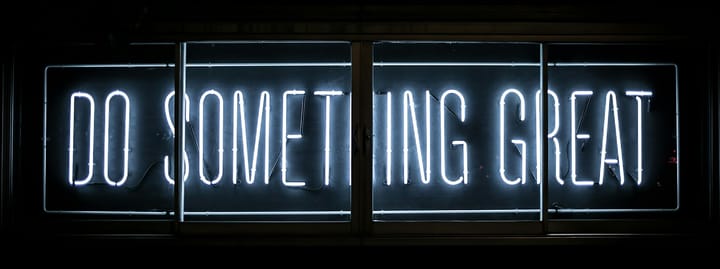Building Your Personal Brand from Scratch (Without the Guru BS)
Personal branding sounds like corporate buzzword soup? Here's how to build authentic professional presence without selling your soul.
Personal branding sounds like corporate buzzword soup mixed with influencer delusions?
I hear you. Every LinkedIn guru is telling you to "leverage your authentic narrative" and "optimize your thought leadership synergy." Meanwhile, you're just trying to advance your career without pretending to be someone you're not.
The whole personal branding industry feels like a carnival of fake motivation and manufactured personalities. Everyone's posting about their "entrepreneurial journey" while working 9-to-5 jobs and pretending their lunch break side project is the next unicorn startup.
But here's the thing: Personal branding isn't about becoming fake. It's about presenting your real self more strategically.
You already have a personal brand - it's just accidental right now. Every email you send, every social media post, every professional interaction is building an impression of who you are.
Battle-tested by someone who built a recognizable professional presence without posting motivational quotes or calling themselves a "disruptor."
What Personal Branding Actually Is (And Isn't)
It's NOT: Becoming a fake online personality or guru
It IS: Intentionally shaping how people perceive your professional value
It's NOT: Posting inspirational content about hustle culture
It IS: Consistently demonstrating your expertise and personality
It's NOT: Pretending to have it all figured out
It IS: Sharing your learning process and genuine insights
It's NOT: Building a massive following of strangers
It IS: Being memorable to the people who matter for your goals
The goal: When people in your field think of [your expertise area], your name comes to mind.
🎯 The Foundation: Know What You're Building
Step 1: Identify Your Professional Sweet Spot
What you're good at: Skills you've developed through work/education
What you enjoy: Tasks that energize rather than drain you
What people ask you about: Expertise others recognize in you
What you want to be known for: Reputation you'd like to build
Example combinations:
- Marketing + storytelling + helping small businesses = "The marketing strategist for authentic brands"
- Engineering + simplification + teaching = "The developer who makes complex tech understandable"
- Finance + creativity + sustainability = "The accountant who helps green businesses thrive"
Step 2: Define Your Audience
Who needs what you offer?
- Potential employers in your field
- Colleagues who might refer opportunities
- Industry peers you want to connect with
- People one level below who want your knowledge
Where do they hang out online?
- LinkedIn for most professional fields
- Twitter for tech, media, marketing
- Industry-specific forums and communities
- Professional association platforms
📱 Platform Strategy for Real People
LinkedIn: Your Professional Home Base
Why it matters: Where hiring managers and colleagues look you up
Content strategy: 80% helpful content, 20% personal insights
Posting frequency: 2-3 times per week maximum
Content that works:
- Industry insights from your experience
- Lessons learned from projects or failures
- Helpful resources you've discovered
- Behind-the-scenes looks at your work process
Content to avoid:
- Generic motivational quotes
- Humble bragging disguised as wisdom
- Controversial political takes
- Oversharing personal details
Twitter: Industry Conversations
Best for: Tech, marketing, media, consulting, journalism
Strategy: Engage more than you post
Focus: Joining existing conversations rather than broadcasting
How to use it:
- Share useful links with your take
- Reply thoughtfully to industry leaders
- Live-tweet industry events or conferences
- Ask questions that start conversations
Industry-Specific Platforms
GitHub: For developers and technical roles
Dribbble/Behance: For designers and creative professionals
Medium: For writers and thought leaders
YouTube: For educators and consultants
The rule: Master one platform before adding others
🔧 Content Creation for Non-Creators
The "Document, Don't Create" Approach
Instead of making up content, document what you're already doing:
- Projects you're working on
- Problems you're solving
- Tools you're learning
- Mistakes you're making and fixing
Example posts:
- "Three things I learned implementing [work project]"
- "Tool review: Why I switched from X to Y"
- "Problem I solved today: [specific work challenge]"
- "Resources that helped me understand [complex topic]"
The Teaching Framework
Pick one thing you know well and teach it consistently:
- Excel tips for your industry
- Communication strategies for remote teams
- Project management lessons from your experience
- Industry trends you're noticing
Why teaching works: Positions you as knowledgeable while helping others
The Curation Strategy
Share and comment on others' content:
- Industry news with your perspective
- Useful tools and resources
- Insights from conferences or courses
- Articles that changed your thinking
Add value: Don't just share - explain why it matters
🎨 Visual Brand Elements (That Don't Require Design Skills)
Professional Photos
You need: One good headshot for profiles
DIY approach: Natural light, clean background, professional clothing
Investment option: $200-500 for professional photos
Update frequency: Every 2-3 years or major role changes
Consistent Colors and Fonts
Keep it simple: Pick 2-3 colors that work well together
Free tools: Canva for consistent visual elements
Brand elements: Use same colors in LinkedIn banner, presentation templates
Professional look: Consistency matters more than creativity
Bio and About Sections
Formula that works:
- What you do (current role/expertise)
- Who you help (target audience)
- How you help (unique approach or value)
- Personal touch (hobby, location, or personality element)
Example: "Marketing manager helping B2B SaaS companies tell better stories. 5 years turning complex products into compelling content. Based in Austin, powered by coffee and curiosity."
📈 Building Your Network Strategically
Quality Over Quantity
Focus on: Meaningful connections in your industry
Avoid: Random connection requests to hit follower numbers
Strategy: Engage with content before connecting
The 5-Touch Connection Process
- Follow their content and engage thoughtfully
- Share their content with your perspective added
- Comment meaningfully on their posts
- Send connection request with personalized message
- Follow up with value (article, introduction, resource)
Industry Events and Communities
Online communities: Join 2-3 relevant groups
Virtual events: Attend industry webinars and conferences
Local meetups: Connect with professionals in your area
Professional associations: Join relevant industry organizations
Engagement strategy: Listen more than you speak, ask thoughtful questions
🚫 Personal Branding Mistakes That Backfire
Trying to be everything to everyone
Narrow focus builds stronger brand recognition
Copying successful people's content exactly
Authenticity beats imitation every time
Posting constantly without strategy
Quality and consistency beat frequency
Making everything about yourself
Help others and share credit generously
Ignoring negative feedback
Address legitimate concerns professionally
Being fake or overly polished
People connect with humans, not corporate robots
📅 The 90-Day Personal Brand Launch
Month 1: Foundation Building
- Week 1: Define your professional sweet spot and audience
- Week 2: Optimize LinkedIn profile and choose secondary platform
- Week 3: Create content calendar with 3 topics you'll focus on
- Week 4: Start posting 2x per week and engaging daily
Month 2: Consistency and Growth
- Week 1: Join 2 industry communities and start participating
- Week 2: Connect with 20 relevant professionals using 5-touch method
- Week 3: Create your first longer-form content (article/video)
- Week 4: Analyze what content performs best and adjust
Month 3: Expansion and Refinement
- Week 1: Guest post or speak at industry event
- Week 2: Launch initiative that helps others (newsletter, resource guide)
- Week 3: Seek feedback from trusted colleagues on your brand
- Week 4: Plan next quarter's brand building activities
Measuring What Matters
Vanity Metrics (Don't Focus On)
- Total followers/connections
- Likes and comments per post
- Views or impressions
Meaningful Metrics (Actually Track)
- Quality conversations started
- Professional opportunities received
- Referrals from network
- Recognition in industry discussions
Personal Brand Health Check
Monthly questions:
- Are you getting opportunities you want?
- Do colleagues view you as you want to be seen?
- Is your online presence attracting your target audience?
- Are you comfortable with your digital footprint?
The Long Game
Year 1: Establish consistent presence and voice
Year 2: Become recognized contributor in your niche
Year 3: Be known as go-to expert for specific topics
Year 5: Have established thought leadership in your field
Remember: Personal branding is a marathon, not a sprint. Consistency over years beats intensity for months.
The payoff: Career opportunities come to you instead of you chasing them
Ready to build your professional presence without the fake guru BS? Pick one platform and commit to posting value-driven content twice a week for 90 days. Get in touch with your progress - I love seeing authentic personal brands develop.
Want more career development advice? Check out our books for navigating career confusion or explore freelancing starter pack for building your reputation.


